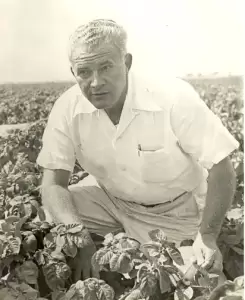Belle Glade POW Camp

During World War II, the War Manpower Commission called for prisoner-of-war (POW) camps to be established in some states to fill the labor shortage caused by the draft. More than 9,000 German prisoners were sent to Camp Blanding near Starke, Florida, where they were assigned to one of the 22 camps in the state. From March to December 1945, after picking oranges in the Orlando area, about 250 POWs were interred at a camp just east of Belle Glade, next to the Everglades Experiment Station. Another camp was located at Clewiston in Hendry County.
The prisoners and camp guards ate the same food, as required by the Geneva Convention. Years later some of the guards reported having had a mutual respect and camaraderie with many of their captives. Two weeks after arriving, however, the prisoners initiated a strike when their cigarette rations were reduced. Because Americans were learning of Nazi concentration camps at that time, national attention and congressional reactions led to 39 “troublemakers” being returned to Camp Blanding. Strikers were restricted to bread and water until they returned to work.

Many POWs worked in a bean-canning factory or helped to build the Lake Okeechobee Dike. Others chopped sugarcane in the fields in and around the camp from before 8 a.m. to about 3 p.m., for which they were paid 80 cents a day. Local farmers sometimes had to be convinced to hire the Germans by county agricultural agent Marvin V. “Red” Mounts. While temperatures over 100 degrees and snakes often made the fieldwork miserable, many of the Germans enjoyed hunting snakes to make souvenirs from their skins.
When the Belle Glade camp was closed, its flagpole was given to the American Legion Post #20 at 101 S.E. Avenue D in Belle Glade.

